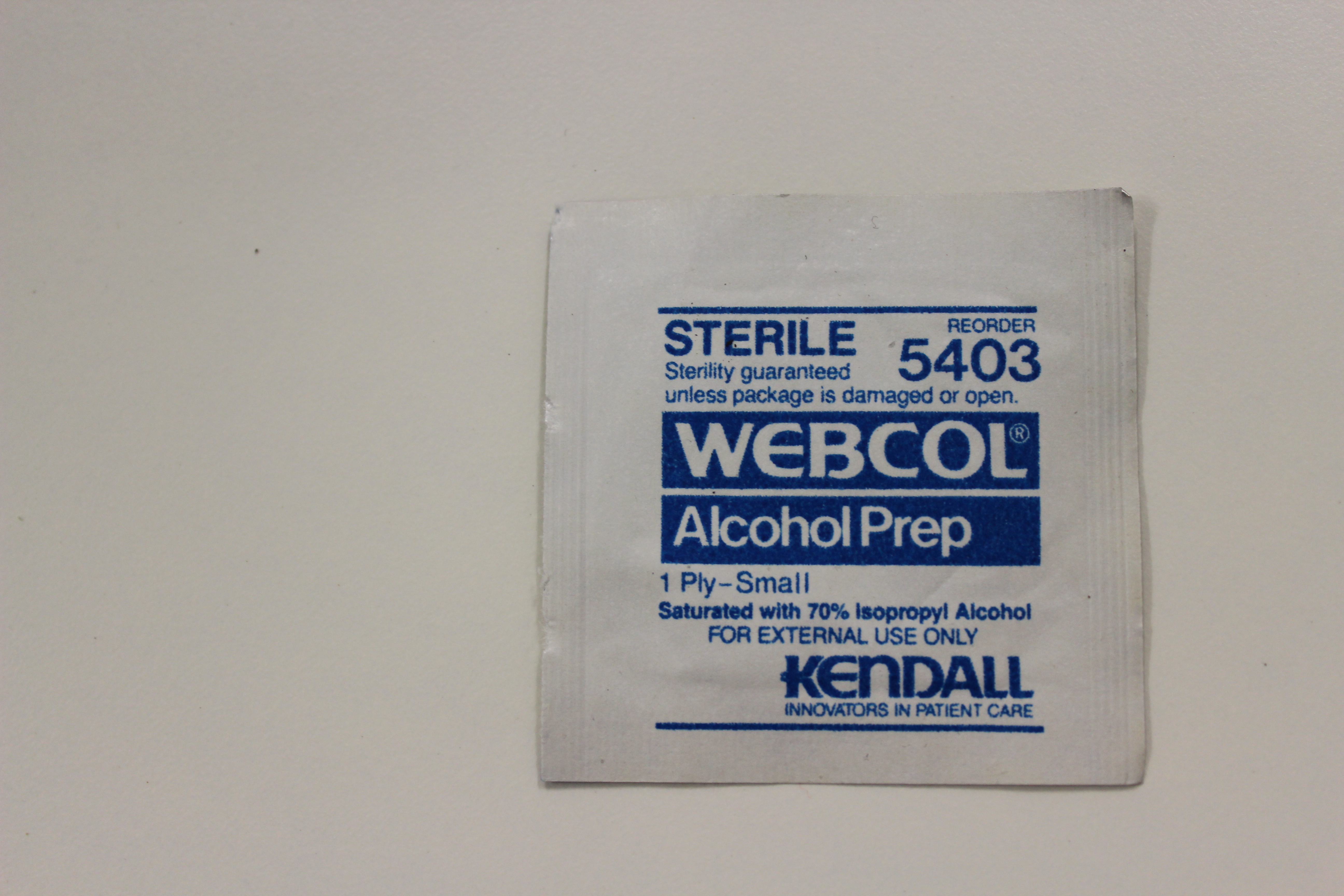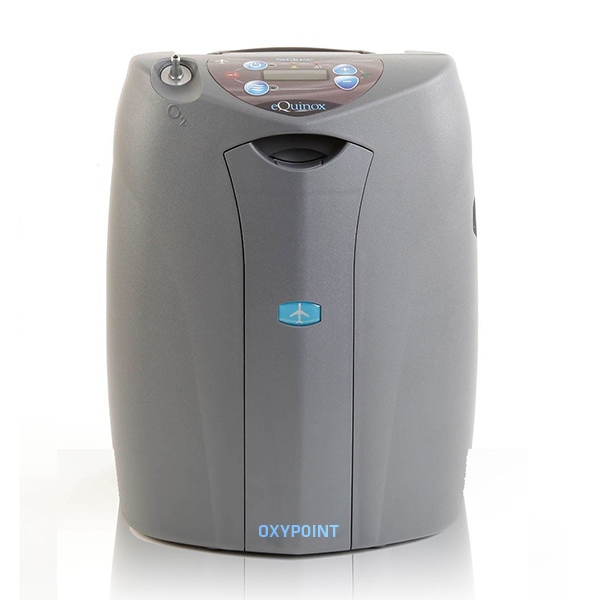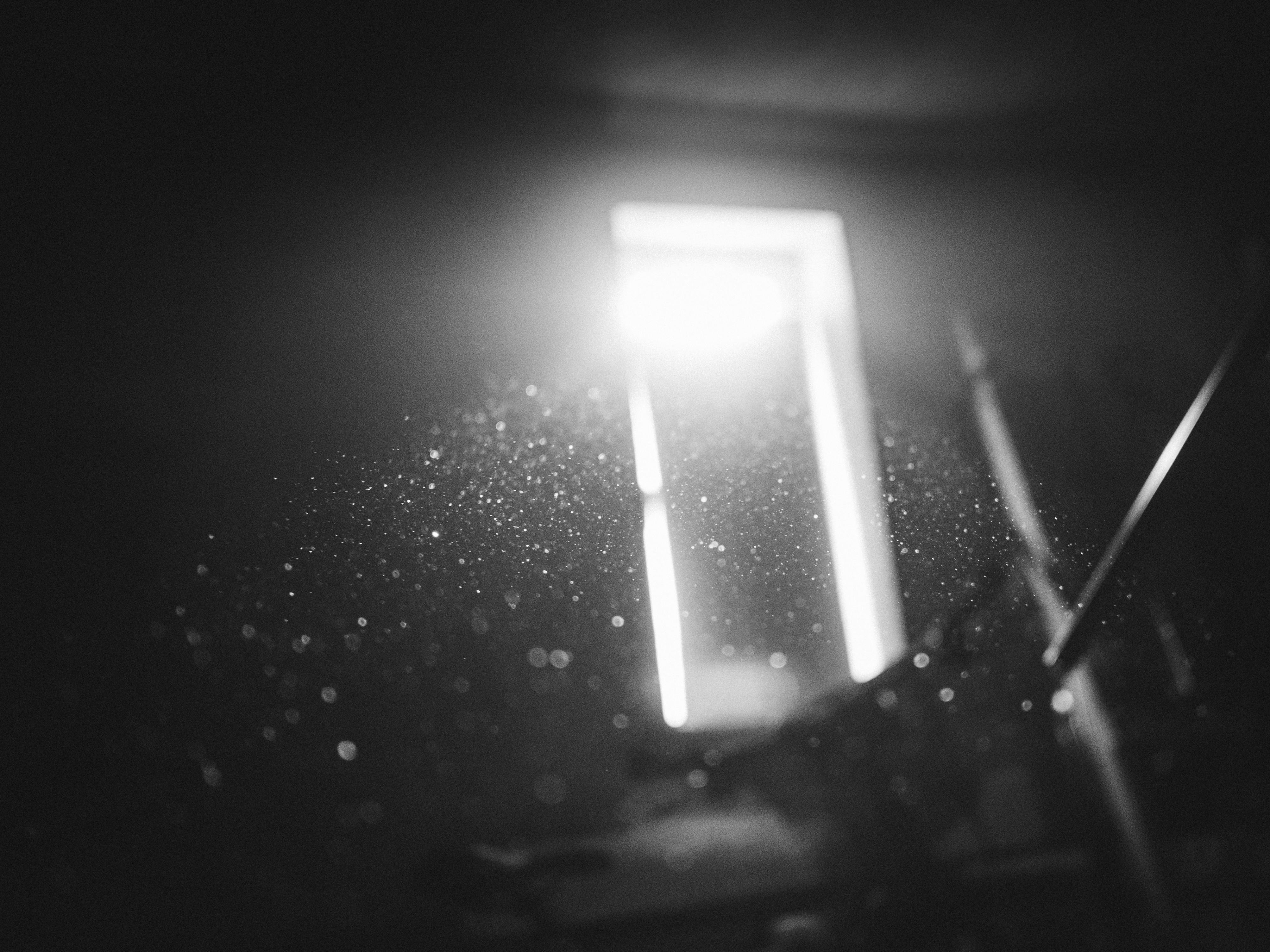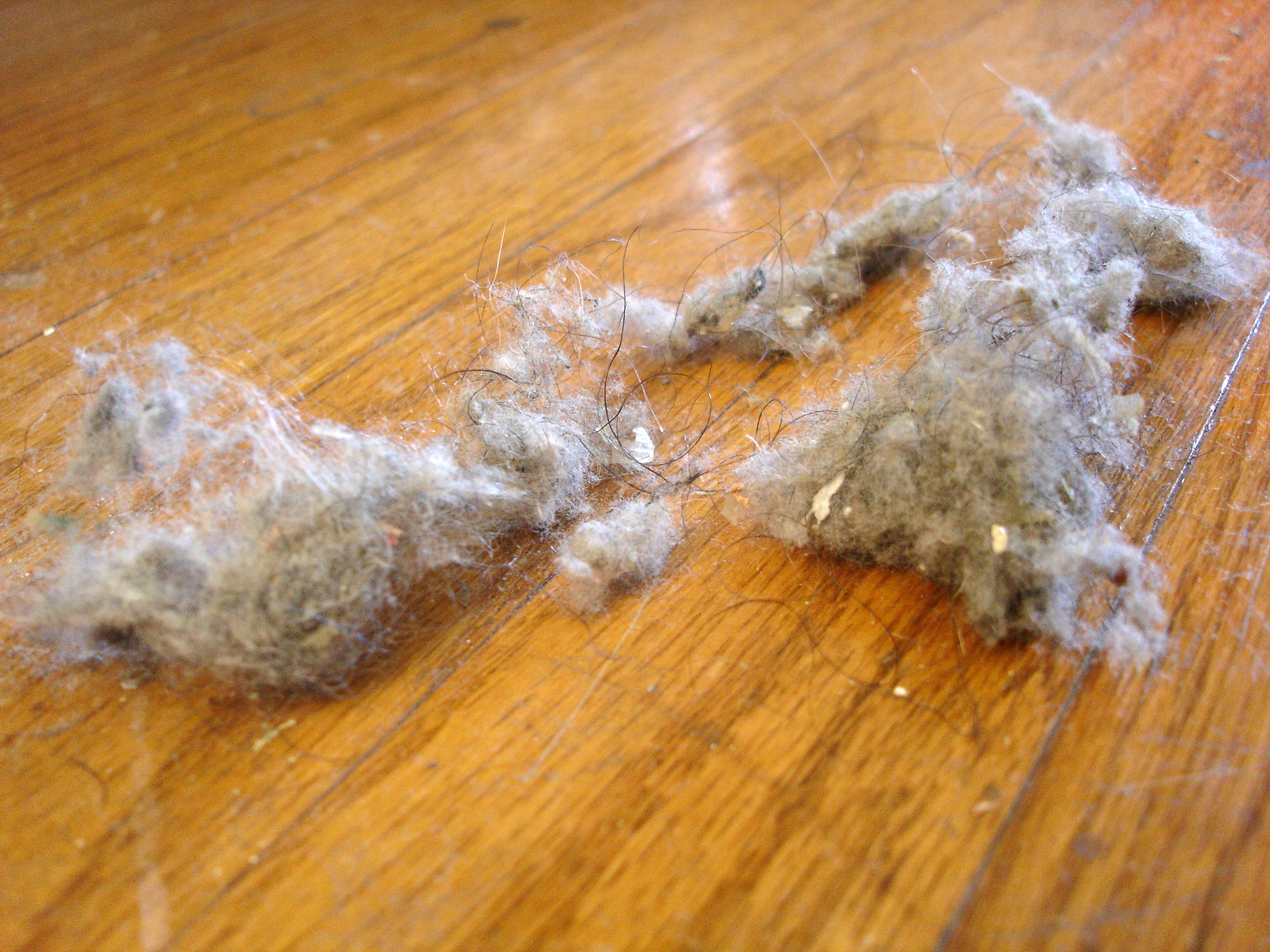Beginning supplemental oxygen therapy is a huge life adjustment and comes with a lot of new concerns and responsibilities. With all the new equipment and guidelines to follow, it can be overwhelming and confusing at first.
That's why we've put together a variety of practical resources to help you understand and navigate oxygen equipment as you begin to integrate oxygen therapy into your daily life. In this article, we're going to show you how to perform standard cleaning and maintenance on all the oxygen devices and equipment that you use.
Many of the different pieces of your oxygen delivery system have the potential to get dirty and worn down, which is why they have to be cleaned and replaced on a regular basis. If you forget or neglect proper cleaning, harmful bacteria, mold, dust, and other grime can contaminate your equipment and cause you to get sick.
Since COPD weakens your immune system and makes you especially prone to respiratory illnesses and infections, it's vital for your health to keep your equipment free from germs and harmful particles. To do so, you need to know how to wash and maintain all the different parts of your oxygen delivery system, including your nasal cannula, oxygen mask, humidifier bottle, tubing, and even your oxygen tanks or oxygen concentrator.

Neglecting proper maintenance can also harm your equipment, causing clogs or wear that could damage your equipment or cause it not to function properly. This can also hurt the effectiveness of your oxygen therapy, reducing your oxygen flow or hurting the quality of the air you breathe.
For many patients, supplemental oxygen is a lifeline, which is why it's vital to keep up with regular cleaning and maintenance. If you neglect your oxygen equipment, then you put yourself and the effectiveness of your oxygen therapy at risk.
How to Clean & Maintain Your Nasal Cannula, Mask, and Tubing

It's important to clean your oxygen delivery equipment—which includes your nasal cannula or oxygen mask and humidifier—regularly to protect yourself from illness and bacteria. As a general rule of thumb, you should clean them at least once a week to prevent them from getting clogged or contaminated with germs.
Because of this, it's important to keep a spare set of oxygen delivery equipment around. That way, you will have an extra nasal cannula or oxygen mask to use while you're washing your equipment or waiting for it to dry.
However, you should not wash the long tubing (called extension tubing) that connects your nasal cannula or mask to your stationary oxygen device. Instead, you should leave it alone and simply replace it with fresh tubing about once per month.
How Often Should You Wash your Equipment?

As we mentioned above, you should generally make sure to give your nasal cannula or oxygen mask a thorough cleaning at least once per week. However, you might need to wash it more often depending on how dirty it gets and what your doctor and the manufacturer recommends.
In addition to a thorough weekly wash, you should also wipe down your equipment with alcohol swabs every day. In the next section, we'll walk you through the process of performing daily and weekly cleanings.
Here are some general guidelines for how frequently you should wash your oxygen delivery equipment:
- At a minimum, wash your nasal cannula or oxygen mask at least once every seven days.
- Check the manufacturer's instructions for your oxygen mask or nasal cannula to see how often they recommend cleaning and replacing your equipment.
- Clean your nasal cannula or oxygen mask whenever you notice any mucus build-up (you may need to wash it more than once per week to keep it clean)
- When you are sick, especially with a respiratory illness, you should clean your equipment more often. This will prevent clogging, kill bacteria, and help ward off secondary infections and exacerbations.
- In-between uses, give your nasal prongs or the inside of your oxygen mask a quick clean by wiping it down with an alcohol swab.
How to Wash Your Oxygen Delivery Equipment

To do your weekly equipment cleaning, start by detaching your nasal cannula or oxygen mask from your oxygen delivery device. If there are any removable parts or tubes, take these apart as well.
Then, wash all the parts of your nasal cannula or oxygen mask in warm, soapy water. Make sure you are thorough, squeezing and scrubbing the tubes to wash out any mucus or other build-up. Make sure you thoroughly rinse off all the soap after it's totally clean.
Next, get ready to sanitize your equipment by mixing up a batch of one part vinegar to ten parts water. This creates a gentle disinfectant that will kill any bacteria that is still on your equipment without damaging the delicate tubing.
Pour the vinegar-water mixture into a large bowl or another container and submerge your equipment in the liquid. Then, use your hands to gently scrub and swish your cannula or oxygen mask around until you are satisfied that it is thoroughly rinsed through.
Finally, rinse your mask or cannula one final time with hot, running water and hang it up on a line to dry. This allows it to drip dry and prevents moisture from getting trapped in the tubing.
As soon as your oxygen mask or nasal cannula has had time to dry out completely, you can hook it back up to your oxygen tank or concentrator and begin using it again as normal.
Daily Cleaning

In addition to weekly cleanings, you should disinfect your nasal prongs or oxygen mask at least once per day. However, daily cleanings are simple and quick, and you only need a store of alcohol wipes or swabs to do it.
To disinfect your nasal cannula, all you have to do is use an alcohol swab to wipe off the outside of the nasal prongs and the outside of the surrounding tubes. To disinfect an oxygen mask, simply wipe off the inside and outside of the mask, paying special attention to the parts that come into contact with your face.
Then, all you have to do is wait for it to dry before you can you re-attach it to your oxygen source and use it again. You should clean your mask or cannula this way in-between each use (or every time you take it off), or at least one time each day.
Replace Your Nasal Cannula or Oxygen Mask Regularly
Unfortunately, nasal cannulae and oxygen masks don't last forever; they're made of fragile plastic materials that get worn out over time. Because of this, it's important to replace them at regular intervals to avoid getting sick and prevent damage and tears that could reduce the effectiveness of your oxygen therapy.
Even if your mask or nasal cannula appears to be clean and undamaged, it's important to replace it at least once every two to four weeks if you use it regularly. Even if there is no visible wear and tear, cracks and tears at the micro level can still collect harmful bacteria and germs.
How long you can use your equipment depends on the brand and manufacturer, and how frequently you use it. Most recommend replacing your nasal cannula or mask at least once every month if you use oxygen every day, while others suggest throwing them out after only two weeks. If you use oxygen less often, or only occasionally, you may be able to use the same nasal cannula or oxygen mask for even longer.
However, some oxygen equipment manufacturers recommend replacing your mask or cannula as often as once every ten days as a safety measure to reduce your risk of illness and infection. If you're not sure how often you should replace your equipment, talk to your doctor or refer to what the manufacturer recommends for the specific product you use.
Replace Your Extension Tubing
Your extension tubing—the tube that connects your nasal cannula or mask to your oxygen concentrator or oxygen tank—has to be replaced regularly as well. The frequency depends on what your doctor and the tubing manufacturer recommends; some types of extension tubing can be used for up to three months at a time, but some need to be replaced more often.
However, you should still check your extension tubing regularly in-between replacements for any damage and grime. If your tubing is dirty, worn, stiffened, or has visible cracks or tears, you should replace it with new extension tubing immediately.
You should also replace any additional parts attached to your extension tubing at least once every three months. This includes the swivel connector that attaches the extension tubing to your oxygen tank or concentrator and the connector piece that attaches the tubing to your oxygen mask or nasal cannula.
Also, remember that your extension tubing should never be longer than 25 feet; any longer and you might not get the correct dose of oxygen from your oxygen source. Make sure to measure new tubing before you install it and trim it to the correct length if necessary.
Cleaning and Replacing Your Oxygen Humidifier
 |
| . Image Courtesy of Kathryn Rotondo |
Using supplemental oxygen, especially at high flows, can dry out your nose and airways. Because of this, many oxygen patients have a humidifier attached to their oxygen delivery system.
Humidifiers can make oxygen therapy much more comfortable and prevent nasal dryness, nosebleeds, and discomfort. However, if you use one, it's important to remember to clean it regularly along with the rest of your equipment.
In general, you should wash out your humidifier bottle thoroughly at least once a week and rinse it out with hot water every time you refill it. It's easy to remember if you make it a habit every time you go to fill it up.
To do weekly cleanings, simply wash the humidifier bottle with warm, soapy water. Then, rinse it with the same water-vinegar mixture you use to clean your nasal cannula or mask (see the the instructions in the previous section for more details).
Remember, while it's okay to wash your humidifier bottle with tap water, you should never refill it back up with water from the tap once it's clean. You should always fill your humidifier bottle with distilled water from the store, so make sure you keep plenty of it around the house.
Like the rest of your oxygen delivery equipment, your humidifier bottle won't last forever and will need to be replaced at regular intervals. In general, you should replace the bottle at least once per month, or more often if directed by your doctor or the manufacturer.
How to Clean and Maintain Oxygen Tanks and Concentrators

Just as it's important to keep your oxygen delivery equipment clean, you also have to care for your oxygen delivery device. Whether you use liquid oxygen tanks, compressed gas canisters, or a home or portable oxygen concentrator, it's important to clean and inspect them regularly to keep them safe and in good working order.
Most oxygen delivery devices are much easier and simpler to maintain than oxygen delivery equipment like nasal cannulae and oxygen masks, needing only minor cleaning and occasional checks for damage and wear. As long as you follow proper storage and handling guidelines, taking care of your oxygen delivery device should be simple, quick, and hassle-free.
Oxygen Concentrator Maintenance and Cleaning

The best thing about home and portable oxygen concentrators is that they don't need to be refilled, replaced, or swapped out like oxygen canisters do. However, you still have to perform regular oxygen concentrator cleaning and maintenance to keep them in good working order.
Even so, oxygen concentrators are still very easy to care for and remain one of the most convenient, hassle-free oxygen devices available. If you use a portable or home oxygen concentrator, regular cleaning and maintenance shouldn't take more than a few minutes of your time each week.
Clean the Filter(s) Regularly

Many (but not all) oxygen concentrators have one or more external filters that have to be cleaned regularly. Most oxygen concentrators are designed to make this very easy, but you may need to refer to your device's manual the first time you do it to figure out where the filters are located and how to remove them.
Most filters require a simple wash with warm, soapy water at least once per week. However, you should check the manufacturer's guide first to see if there are any specific cleaning or maintenance instructions.
Here are the basic steps for cleaning your oxygen concentrator's filters:
- Locate and take out all the external filters from your oxygen concentrator machine. Refer to your user manual if you're not sure where they are or how to remove them.
- Rinse off your filters under warm water and wash them with a non-moisturizing detergent. It's important to choose a soap that doesn't have added lotions or oils.
- Rinse off all the soap and give the filters a final rinse under hot water.
- Then, gently squeeze or press on the filter to remove as much moisture as possible.
- Lastly, use a clean, dry towel to pat the filters dry and set them in a clean, dry place with plenty of air circulation to finish drying. Once they are totally moisture-free, you can re-insert the filters and begin using your oxygen concentrator once more.
It's a good idea to keep an extra set of filters to replace the dirty ones with while you're cleaning them, especially if you use oxygen continuously. However, you can always use a backup oxygen source, such as an oxygen tank, while you wait for your filters to dry.
Clean the Outside of Your Oxygen Concentrator

Whether your concentrator is portable or stationary, you need to wipe it down regularly to remove dust, dirt, and grime. This will help reduce the amount of dust and other particles that get trapped in the filter and prevent contamination of other oxygen equipment that comes into contact with the machine.
To clean your oxygen concentrator, all you have to do is a take damp cloth with a dash of soap and wipe off the outside of the plastic casing. Give it another wipe with a dry cloth and it will be clean and good to go.
This shouldn't take you more than a minute or two, and you should do it once or twice per week. It will not only help you stay healthy, but it will keep your concentrator looking nice and sleek.
Protect Your Oxygen Concentrator from Dust and Particles

The way an oxygen concentrator works, it is constantly pulling outside air in and circulating it through the machine. This air passes through your oxygen concentrator's filters, where it traps dust, mold, and other airborne particles so they won't make it into your lungs.
However, using your oxygen concentrator in a very dusty environment causes the filters to get clogged up more quickly, which can reduce the purity of the oxygen that the machine outputs. If this clogs your concentrator's non-removable, internal filters, they could be very difficult and expensive to replace.
In the case of removable external filters, excess dust makes it necessary to clean and replace the filters much more often. In general, a dusty environment is not healthy for your oxygen concentrator machine and can hurt both its lifespan and its ability to function efficiently.

Because of this, it's important to keep your home as clean and dust-free as possible. There are many ways to improve the air quality in your home; in fact, we discussed a variety of practical habits and techniques for doing just that in our previous article about how to improve your indoor air quality. You can also get separate air purifying machines or whole-house HVAC air purifying devices to reduce the amount of bacteria, mold, dust, and other particles in your home.
You can also protect your oxygen concentrator from picking up excess dust and dirt by covering it and turning it off when you clean around the house. Some cleaning tasks, like dusting, vacuuming, and sweeping tend to stir up extra dust and kick it into the air, where it will then get sucked up into your oxygen concentrator machine.
Watch Out for Overheating
While most home oxygen concentrators are designed to be able to operate for at least 24 hours at a time, some have a tendency to overheat. When they get too hot, they turn off abruptly and won't operate until they cool down.
If this happens to your machine, you can prevent it by running it for shorter periods of time and turning it off to allow it to cool down in-between. For example, try only using your home oxygen concentrator for about 7-8 hours at a time, and then shut it off for about thirty minutes to give it a rest.
You might have more trouble with this during the summer when outside temperatures and humidity levels are higher. If your oxygen concentrator overheats regularly or doesn't operate up to specs, you should have the machine inspected and serviced by a licensed technician.
Oxygen Tank Cleaning and Maintenance
 |
| Photo by Rick |
If you use liquid and compressed gas oxygen canisters for oxygen therapy, then you shouldn't have to worry about much extra cleaning. The only oxygen tank maintenance you should have to personally worry about is preventing damage and storing your canisters properly.
However, unlike oxygen concentrators, oxygen tanks and reservoirs have to be refilled or replaced on a regular basis, usually at least once every two weeks. So, even though you don't have to perform regular cleaning or maintenance, you do have to keep track of how much oxygen use you use and make sure that your tanks get refilled or replaced on time.
Store Your Oxygen Canisters Safely

The main safety concern with oxygen canisters is keeping them upright, secured, and safe from getting damaged. Holes or leaks in compressed gas tanks, especially, can result in dangerous fires, explosions, or projectile hazards.
Anytime you move or transport an oxygen tank, remember that it contains volatile, pressurized gasses or liquids that must be handled with care. Never let oxygen canisters fall over, drag against the floor, or bang against objects or against one another.
You should also be very careful to keep your oxygen tanks safely secured whenever you take them anywhere, whether you're transporting them in your car or simply wheeling them from one room to another. Always secure your tank snugly in an oxygen cart or container designed specifically to hold oxygen canisters.
Here are some tips for properly and safely storing oxygen tanks:
- Always keep your oxygen tanks in a cool, dry place. Never allow them to be exposed to extreme temperatures.
- Always keep your tanks upright and never store them on their sides.
- Secure extra tanks in a special stand, cart, or chain them up securely so they won't fall over.
- Do not store oxygen tanks on shelves or in any elevated space. Always store them on the floor, where there is no danger of them falling from a dangerous height.
- Always keep your oxygen tanks in an open, well-ventilated space, even when storing or transporting them. Make sure there is plenty of air flow and crack your car window when transporting them via your vehicle. This will ensure oxygen doesn't build up in a small space and reduces flammability risk.
- Always practice proper oxygen fire safety, including posting no smoking signs and being careful to never use oxygen near open sparks or flames.
Check Your Oxygen Tanks for Leaks and Damage

Damaged or leaky tanks could be dangerous or ineffective for oxygen therapy, which is why it's important to inspect your canisters for damage before use. Always handle your oxygen tanks with care and never use a tank that is leaky, damaged, or shows signs of excessive wear and tear.
To inspect your tank, check all around the canister for any leaks, dents, scrapes, or holes. You should also inspect the valve for any leaks and make sure that it turns and operates properly.
The oxygen tanks that your supplier gives you should already be well cared for and maintained, but it's a good idea to inspect them yourself for your own safety. You should give each new tank you use a quick check before hooking it up and be sure to thoroughly inspect any tanks that have been banged, dropped, or may have otherwise been damaged.
Getting Your Oxygen Refilled or Replaced
The most important part of maintaining your oxygen tanks is to make sure they get refilled or replaced on time. That means ordering more oxygen before you run out, which is why you should always keep an eye on how much you have left in your supply.
You should always be aware of the pressure in your oxygen tanks or the volume of oxygen you have left in your liquid oxygen reservoir. If you begin to run low before the next time that your oxygen supplier is scheduled to bring you a refill, you should call your oxygen supplier and order more right away.
If you are worried that you will run out before your next supply arrives, you can conserve oxygen and reduce discomfort by reducing your activity level and taking it easy. By limiting physical activity you can lower your respiration rate and reduce strain on your lungs.
However, if you keep track of your oxygen supply every day and order more before it gets too low, you shouldn't ever run into this problem. If you do run out of oxygen and experience severe symptoms like breathlessness, fatigue, or other symptoms of acute hypoxia, you should seek medical attention or call 911 immediately.
Keep a Clean Environment for Oxygen Therapy
Having COPD puts you at a higher risk for illnesses and infections, which can quickly turn into serious exacerbations that can make your disease permanently worse. In order to protect your lungs and keep yourself healthy with COPD, you have to keep your equipment and your environment clean and free from germs and grime.
That means not only cleaning your equipment as directed, but also making sure to store and wash your equipment in a clean environment. For example, if you clean your equipment in a dirty sink or set it out to dry on a dusty counter top, you'll just immediately re-contaminate your equipment with harmful dirt and bacteria.
Because of this, it's very important to keep your home clean and the indoor air free from dust, mold, and allergens. You should also make sure to wash your hands and give any nearby surfaces an extra wipe-down right before you do your weekly equipment cleanings.
You should also avoid cleaning your equipment near open windows or directly after vacuuming. That way, you're not setting your equipment out where it has a high chance of encountering dust, allergens, and other airborne particles.
You Can Breathe Easy When You Know Your Equipment is Clean and Safe

Supplemental oxygen therapy is an important part of COPD treatment and improves the quality of life for many patients with respiratory diseases and conditions. However, it doesn't come without risks, which is why it's important to take cleaning and replacing your equipment seriously.
If you have trouble remembering to do daily and weekly maintenance, write up a schedule so you can remind yourself when it's time for daily and weekly cleanings. Set an alarm on your phone or put notes up in your house where you will see them every day if you need to.
You should also have a schedule for replacing equipment like nasal cannulae, oxygen masks, humidifier bottles, tubing connectors, and extension tubing. Since they all need to be replaced at different intervals, it can be difficult to keep track of what you should replace when if you don't have a written reminder. Ordering new equipment and switching it out with old ones is generally simple and inexpensive to do, but it can also be an easy thing to forget or neglect in the bustle of daily life.
Luckily, once you make it a habit, oxygen concentrator maintenance is a quick, simple task that shouldn't take more than ten or fifteen minutes each week. Overall, it's only a small inconvenience, and will protect you from dangerous illnesses and COPD exacerbations.


.png)



